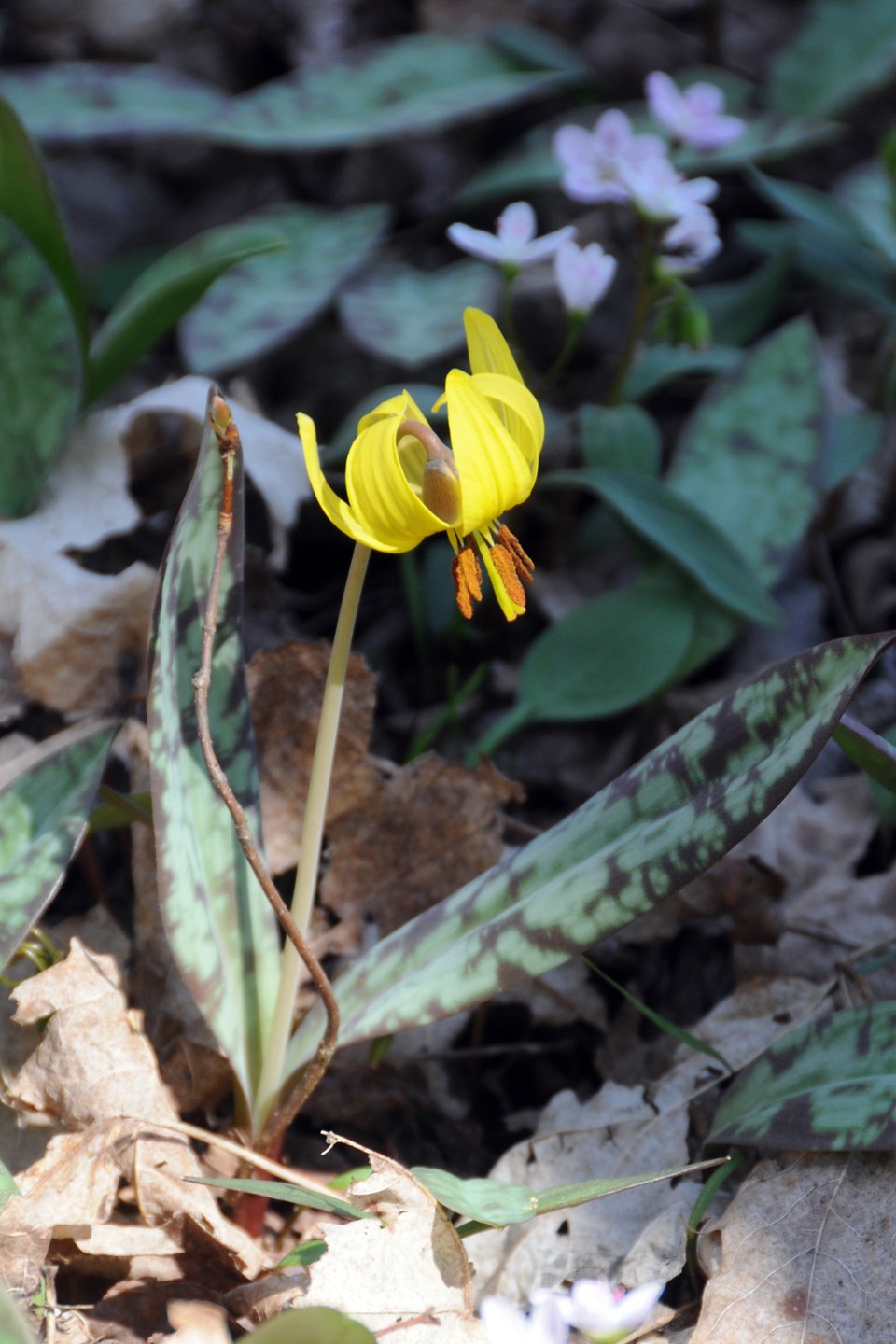Observing a springtime blossom is such a simple joy.
After months of snow and ice, even a tiny splash of colour can be a spirit-lifting event. And this cool, wet spring has made the quest for spring flowers all the more challenging, as several species have delayed their blooming by several weeks.
That first wave of wildflowers, including spring beauty, bloodroot, blue cohosh and fawn lily, has now been overshadowed by trilliums of the white and red varieties.
This group is collectively known as "the spring ephemerals" (ephemeral being the word to describe something that is short -lived). Although about three weeks late, the trees are unfurling their leaves and woodlots are once more looking like woodlots.
The flower plants need heat and sunshine to grow, so as soon as the snow melts they are starting to push energy towards leaf and flower production. As the spring warmth radiates down from the big yellow star overhead, photosynthesis takes place within the leaf, turning solar energy into sugars to assist with rapid growth.
With enough energy (some stored in the roots from last year and some gathered from today's sunshiny day) a flower is produced. The reason the flower is produced is to manufacture seeds that will ensure the continuity of that particular species. No flower, no seeds. No seeds, no 'forever and ever".
The big step not yet mentioned in this process is understanding where the flower gets the pollen from another flower to make the seeds begin to grow.
This requires pollinators, those myriad bugs, beetles, moths, butterflies, ants, flies, bees and, in some cases, birds.
Once the tree leaves are open and the forest floor is in shade, most of these pollinators will have shifted their focus to the sunny side of the world, leaving the cool shadows of the woodlot unvisited.
And thus the race to produce a flower and attract a pollinator before the new leaves open fully and shade the forest floor.
But wait, there's more.
As you are probably aware, plants are rooted and cannot chase after their favorite pollinator, so they have to somehow lure the passing fly or bee to abruptly change its flight path and drop in for a visit.
This visit is to transfer some of its pollen onto the bee and hopefully pick off some of the pollen from a previously visited flower. After the bee departs the mixed pollen gets busy creating a new seed.
To attract said passing bee, the flower may use bright showy petals or sweet smelling nectar to entice the winged beastie to alight and dine while being dowsed in pollen grains.
This shipping and receiving of pollen is the most important event of any flowers life span. As simple as the plan sounds, there is a lot of background planning as to enticing and entertaining these pollinators.
No nectar means no visitation, but too much nectar means the insect is full up on one visit and sees no need to carry on through the flower bed.
And so each blossom offers up just a taste, just a hint, just a mouthful, just enough to bring the insect in close for a quick reward. Looking for more and more sweet nectar, the bee goes flower to flower to flower, thus transferring pollen between flowers as it seeks further nourishment.
If you look closely at flower structure, some are flat and open (think daisy) while others are complex and convoluted (think irises and orchids). This diversity of structure allows the plants to grow as a mix, side by side, without 'stealing' the others pollinators.
Big bees go here, little bees go over there, butterflies way up there, and ants go out on a limb. Eventually, hopefully, there are enough flowers and pollinators to make sure every plant gets a visit by something. Nature is rather cool that way.
To say a flower brings simple joy is perhaps an understatement, at least from the plant's point of view. A flower is the bridge between this life and the next, botanically speaking.
When you are in the field and the urge to pick comes strong upon you, shrug it off and take a picture instead. The flowers will thank you.
